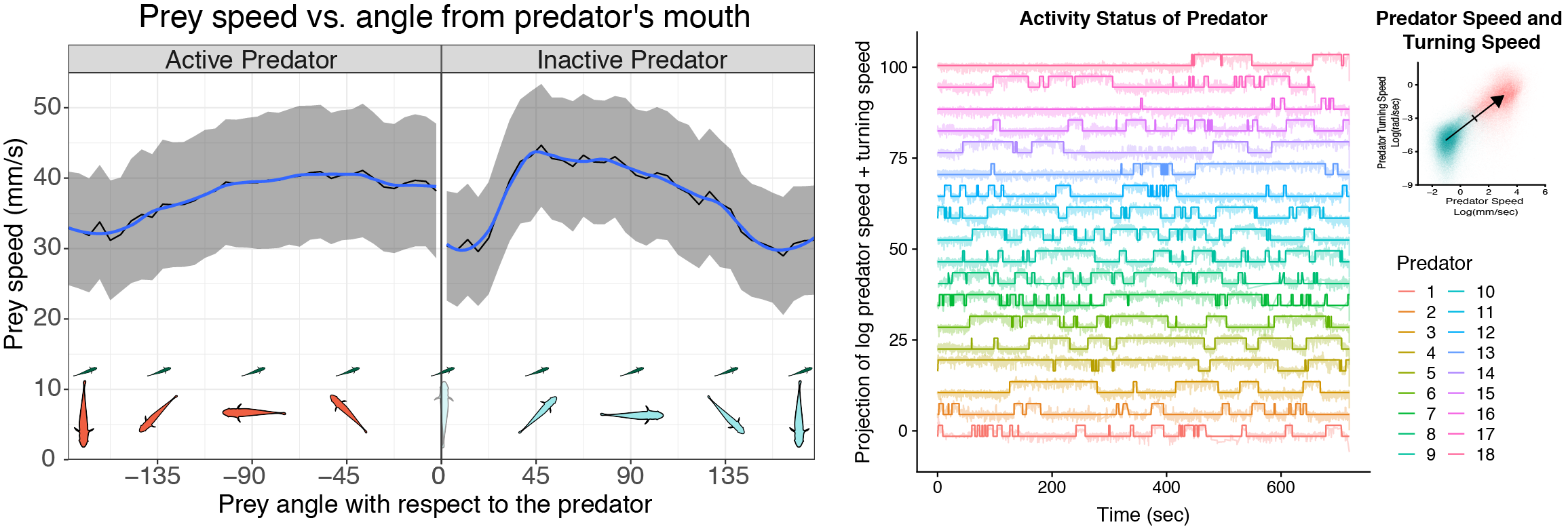 Some fishy analytics
Some fishy analyticsFine-scale behavioural adjustments of prey on a continuum of risk
Abstract
In the wild, prey species often live in the vicinity of predators, rendering the ability to assess risk on a moment-to-moment basis crucial to survival. Visual cues are important as they allow prey to assess predator species, size, proximity and behaviour. However, few studies have explicitly examined prey’s ability to assess risk based on predator behaviour and orientation. Using mosquitofish, Gambusia holbrooki, and their predator, jade perch, Scortum barcoo, under controlled conditions, we provide some of the first fine-scale characterization of how prey adapt their behaviour according to their continuous assessment of risk based on both predator behaviour and angular distance to the predator’s mouth. When these predators were inactive and posed less of an immediate threat, prey within the attack cone of the predator showed reductions in speed and acceleration characteristic of predator-inspection behaviour. However, when predators became active, prey swam faster with greater acceleration and were closer together within the attack cone of predators. Most importantly, this study provides evidence that prey do not adopt a uniform response to the presence of a predator. Instead, we demonstrate that prey are capable of rapidly and dynamically updating their assessment of risk and showing fine-scale adjustments to their behaviour.